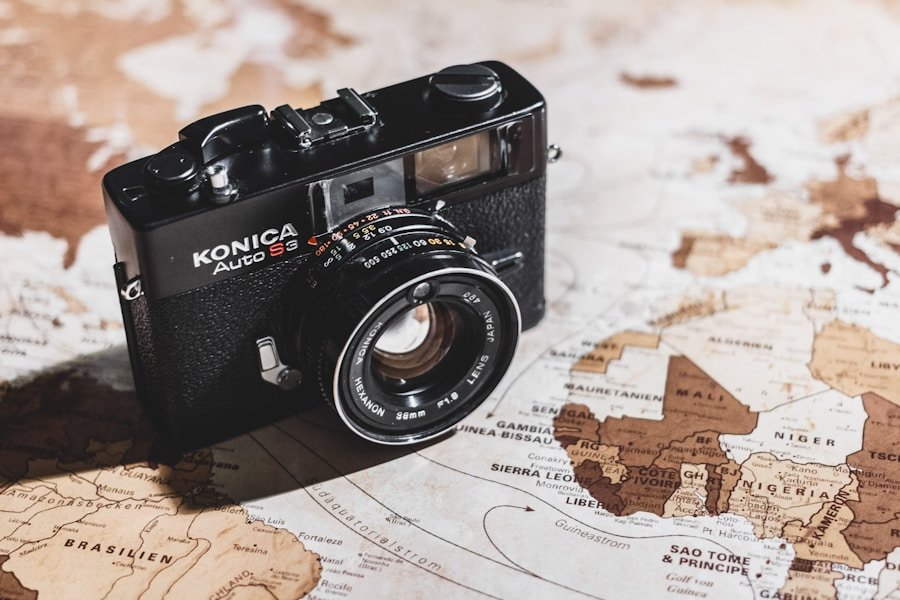The world of photography has seen incredible advancements in technology over the years, leading to the development of innovative cameras that have revolutionized the way we capture and preserve memories. From the early days of film cameras to the digital age, camera innovations have continuously pushed the boundaries of what is possible in the world of photography. These advancements have not only improved the quality of images but have also made photography more accessible to a wider audience.
In recent years, the pace of camera innovation has accelerated, with manufacturers constantly pushing the envelope to create cameras that are more powerful, versatile, and user-friendly. From advancements in lens technology to the rise of mirrorless cameras, cutting-edge sensor developments, revolutionary image stabilization techniques, and the integration of artificial intelligence in photography, the future of camera innovations is incredibly exciting. In this article, we will explore these advancements in detail and discuss the impact they have had on the world of photography.
Advancements in Lens Technology
One of the most significant advancements in camera technology has been in the field of lens technology. Lenses are crucial components of any camera, as they determine the quality and characteristics of the images that are captured. In recent years, there have been significant advancements in lens design and manufacturing, leading to lenses that are sharper, faster, and more versatile than ever before.
One of the most notable advancements in lens technology has been the development of aspherical lenses, which are designed to reduce spherical aberration and distortion, resulting in sharper and more accurate images. Additionally, advancements in lens coatings have led to lenses that are more resistant to flare and ghosting, allowing photographers to capture high-contrast images even in challenging lighting conditions. Furthermore, the development of advanced autofocus systems has made it easier for photographers to capture fast-moving subjects with precision and accuracy. These advancements in lens technology have not only improved the quality of images but have also expanded the creative possibilities for photographers, allowing them to capture stunning images in a wide range of shooting scenarios.
The Rise of Mirrorless Cameras
In recent years, there has been a significant shift in the camera market towards mirrorless cameras. Unlike traditional DSLR cameras, which use a mirror mechanism to reflect light into an optical viewfinder, mirrorless cameras use an electronic viewfinder or LCD screen to display the image. This design allows for a more compact and lightweight camera body, making mirrorless cameras more portable and versatile than their DSLR counterparts.
The rise of mirrorless cameras has been driven by advancements in sensor technology and electronic viewfinders, which have improved the performance and usability of these cameras. Mirrorless cameras are now capable of capturing high-resolution images with impressive dynamic range and low-light performance, making them a popular choice for professional photographers and enthusiasts alike. Additionally, the absence of a mirror mechanism allows for faster burst shooting and continuous autofocus, making mirrorless cameras well-suited for capturing fast-moving subjects such as wildlife and sports.
Furthermore, the growing popularity of mirrorless cameras has led to a wide range of lenses and accessories being developed specifically for these cameras, further expanding their capabilities. With their compact size, advanced features, and growing ecosystem of lenses and accessories, mirrorless cameras are poised to continue their rise and become the preferred choice for many photographers in the years to come.
Cutting-Edge Sensor Developments
The development of image sensors is another area where significant advancements have been made in recent years. Image sensors are at the heart of digital cameras, converting light into digital signals that can be processed and stored as images. Over the years, there have been significant improvements in sensor technology, leading to sensors that are more sensitive to light, have higher resolution, and offer better dynamic range.
One of the most notable advancements in sensor technology has been the development of backside-illuminated (BSI) sensors, which are designed to improve light sensitivity and reduce noise in low-light conditions. BSI sensors have become increasingly common in modern digital cameras, allowing for better performance in challenging lighting situations such as night photography or indoor shooting. Additionally, advancements in sensor design have led to sensors with higher resolution and larger pixel sizes, resulting in images with greater detail and clarity.
Furthermore, advancements in sensor technology have also led to improvements in dynamic range, allowing modern cameras to capture a wider range of tones and colors in high-contrast scenes. This has been particularly beneficial for landscape and portrait photographers who require accurate and detailed images in a variety of lighting conditions. With continued advancements in sensor technology, we can expect digital cameras to continue to improve in image quality and performance, further pushing the boundaries of what is possible in photography.
Revolutionary Image Stabilization Techniques
Image stabilization is a crucial feature in modern cameras that helps reduce the effects of camera shake when capturing images or recording videos. Over the years, there have been significant advancements in image stabilization technology, leading to more effective and versatile stabilization systems that allow photographers to capture sharp images even in challenging shooting conditions.
One of the most significant advancements in image stabilization has been the development of sensor-shift stabilization systems, which use movable sensor technology to compensate for camera shake. This technology allows for effective stabilization with any lens attached to the camera, making it a versatile solution for photographers who use a wide range of lenses. Additionally, advancements in electronic stabilization have led to more effective video stabilization, allowing for smooth and steady footage even when shooting handheld or in motion.
Furthermore, the integration of artificial intelligence into image stabilization systems has led to even more advanced stabilization techniques. AI-powered stabilization systems can analyze movement patterns and predict camera shake before it happens, allowing for more precise and effective stabilization. This has been particularly beneficial for photographers who shoot in challenging conditions such as low light or with long telephoto lenses. With these revolutionary image stabilization techniques, photographers can now capture sharp and steady images and videos with greater ease and confidence.
Integration of Artificial Intelligence in Photography
Artificial intelligence (AI) has become an increasingly important part of modern camera technology, with manufacturers integrating AI-powered features into their cameras to improve performance and usability. AI-powered features can analyze scenes and subjects in real-time, allowing for more accurate autofocus, exposure metering, and scene recognition. Additionally, AI can assist photographers with tasks such as composition analysis, subject tracking, and even post-processing adjustments.
One of the most notable applications of AI in photography is in autofocus systems, where AI-powered algorithms can analyze scenes and predict subject movement to ensure accurate and reliable autofocus performance. This has been particularly beneficial for sports and wildlife photographers who require fast and precise autofocus when capturing fast-moving subjects. Additionally, AI-powered exposure metering can analyze scenes and adjust exposure settings in real-time to ensure accurate exposure for every shot.
Furthermore, AI-powered scene recognition can analyze scenes and subjects to optimize camera settings for specific shooting scenarios such as portraits, landscapes, or night photography. This allows photographers to focus on composition and creativity while letting the camera handle technical adjustments. With the integration of AI in photography, modern cameras are becoming more intuitive and capable than ever before, allowing photographers to capture stunning images with greater ease and efficiency.
The Future of Camera Innovations and Technologies
As we look towards the future of camera innovations and technologies, it is clear that there are still many exciting developments on the horizon. Advancements in lens technology, sensor developments, image stabilization techniques, and AI integration will continue to push the boundaries of what is possible in photography. Additionally, we can expect to see further advancements in areas such as computational photography, 3D imaging, and virtual reality that will further expand the creative possibilities for photographers.
One area that holds great promise for the future is the development of organic sensors, which are designed to mimic the structure and function of human eyes. Organic sensors have the potential to capture a wider range of colors and tones than traditional sensors, leading to images that are more true-to-life and immersive. Additionally, advancements in computational photography will allow for more advanced image processing techniques that can enhance image quality and creative possibilities.
Furthermore, we can expect to see continued integration of AI into camera systems, leading to more intelligent and intuitive cameras that can assist photographers with a wide range of tasks. From automated post-processing adjustments to real-time composition analysis, AI-powered features will continue to improve the performance and usability of modern cameras.
In conclusion, the future of camera innovations and technologies is incredibly exciting, with continued advancements in lens technology, sensor developments, image stabilization techniques, AI integration, computational photography, and more on the horizon. These advancements will not only improve the quality and capabilities of modern cameras but will also expand the creative possibilities for photographers around the world. As technology continues to evolve, we can expect modern cameras to become even more powerful, versatile, and user-friendly than ever before.








